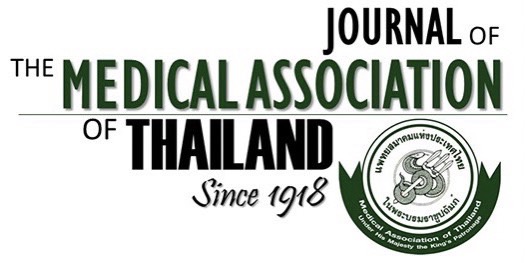Effectiveness of Multicomponent Lipid Emulsion in Preterm Infants Requiring Parenteral Nutrition: A Two-Center, Double-Blind Randomized Clinical Trial
Wilaiporn Techasatid MD*, Siwaporn Sapsaprang MD*, Pichaya Tantiyavarong MD**, Anita Luvira MD***
Affiliation : * Department of Pediatrics, Faculty of Medicine, Thammasat University, Pathum Thani, Thailand ** Department of Medicine, Faculty of Medicine, Thammasat University, Pathum Thani, Thailand *** Department of Pediatrics, Nopparat Rajathanee Hospital, Bangkok, Thailand
Background : Very-low-birth-weight infants are largely dependent on parenteral nutrition after birth. Parenteral nutrition-
associated liver disease is often observed in long-term parenteral nutrition with pure soybean oil lipid emulsion. A novel
multicomponent lipid emulsion may prevent liver injury, improve growth, and decrease morbidity in preterm infants.
Objective : To compare the effects of a multicomponent lipid emulsion with a conventional pure soybean oil lipid emulsion
on the incidence of neonatal cholestasis, neonatal growth, neonatal morbidity, and the biochemical assessment of liver
enzymes.
Material and Method: Preterm infants weighing less than 1,250 g were allocated using a double-blind method. Both groups
received parenteral nutrition, based on the same protocol. The study group received multicomponent lipid emulsion, while
the control group received the standard pure soybean oil lipid emulsion. Serum levels of bilirubin, alkaline phosphatase
(ALP), aspartate aminotransferase (AST), alanine aminotransferase (ALT), and gamma-glutamyl transpeptidase (GGT)
were measured before enrollment, and at week 1, 2, and 3. Clinical data on neonatal outcomes were collected until the day
of discharge.
Results : Each group was comprised of 22 preterm infants. The mean total parenteral nutrition (TPN) days were 12.5±8.1
and 10.5±5.9 in the study group and the control group respectively. There were no significant differences in laboratory
parameters, including liver enzymes and GGT between the two groups. The incidence of cholestasis was 4.5% in the study
group, and 9% in the control group, which was not statistically significant. No differences were observed in neonatal growth
or neonatal morbidity including sepsis, bronchopulmonary dysplasia, retinopathy of prematurity, and necrotizing enterocolitis
between the two groups. Eight infants (36%) in the study group experienced growth failure before discharge compared with
12 infants (54%) in the control group.
Conclusion : Multicomponent lipid emulsion appeared to be safe and well tolerated in preterm infants. No beneficial effects
on the prevention of liver dysfunction were seen based on the type of lipid emulsion.
Keywords : Preterm, Parenteral nutrition, Cholestasis, Intravenous lipid emulsion, Growth



